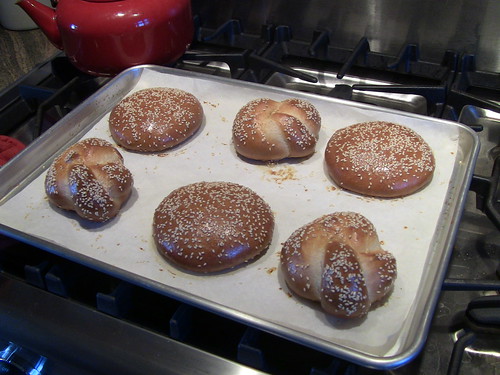... and now for something different.
We helped celebrate a good friends birthday last night––the same person who I have recently started baking a weekly sourdough loaf for :)
She asked if I could supply enough bread for the party to cater 30 guests. My first thoughts … ‘that this would be a bake worlds away from whole grains, fresh milled flour and natural levains’. I was given free range of what I could bake, and as much as I would of loved to have left a giant miche in the middle of the table, I knew I had to bake for a wider audience. The party was a barbeque with lots of fresh salads and spit-roasted meat––bread rolls were an essential compliment to the meal. I thought it might be fun to also include some bread which could be torn and used to mop up any remaining sauce left on the plate.
I initially thought ‘white bread rolls’, but after reading through Tartine Bread I became hooked on the idea of using brioche dough as a wonderfully decadent barbeque bun. My go-to brioche formula is from Richard Bertinet’s book, Crust. It is very rich, slightly sweet and uses an overnight rest in the fridge, making scheduling a breeze.
In addition to the brioche, I wanted the ‘other’ bread to be able to mop up the leftovers or be used to build extravagant sandwiches. Ciabatta! My favourite ciabatta formula comes from Maggie Glezer’s Artisan Baking courtesy of Craig Ponsford. It has a wonderful flavour from a biga fermented for 24 hrs prior to mixing. But mixing is hardly the right word. Really the ingredients are brought together with a minimal short mix then strengthened via stretch and folds through the bulk ferment.
Preparing biga

Arteries beware

… after breakfast, (24 hrs before bake day) I mixed the biga including freshly milled grains and a tiny amount of yeast.
That night I prepared the brioche dough. I find it’s best not to think too deeply about the amount of eggs and butter you are about to use … artery hardening :) yikes!!
The eggs, sugar and flour were autolysed for 45 mins before adding the yeast and kneading (slap and fold) for 5 mins. I incorporated the salt and kneaded a further 10 mins until the dough window-paned. Then came a further 30 mins of kneading as I incorporated the butter … this is a slow and ponderous task. It literally feels like one step forward and two steps backward with each addition of butter. In the end you are rewarded with the silkiest, smoothest dough imaginable. It was then bulk fermented for two hours with one stretch and fold before being placed in the refrigerator for an overnight rest. Ahhhh …
The next morning the biga was still not at a stage I was happy with (temperature had dropped during the rainy night) so I delayed the start of the ciabatta mix (and started a hybrid sourdough version as an experiment … I will post on this soon). I also removed the brioche dough from the fridge and allowed it an hour at room temperature before dividing and shaping. The brioche dough proved for two and a half hours. It was egg-washed, sprinkled with sesame seeds and set to bake for thirty minutes until the centre buns began to brown sufficiently.
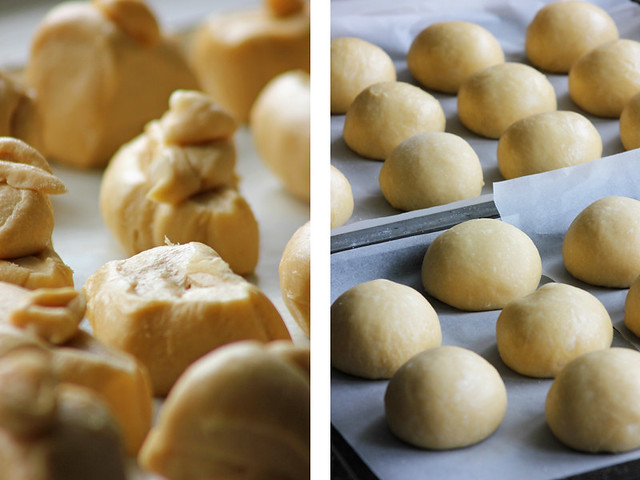
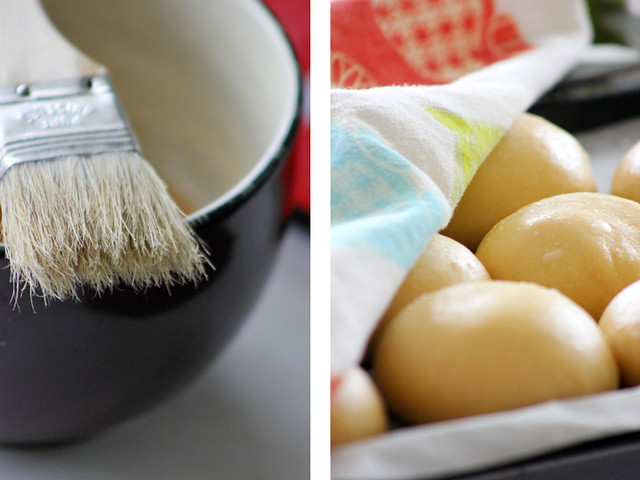
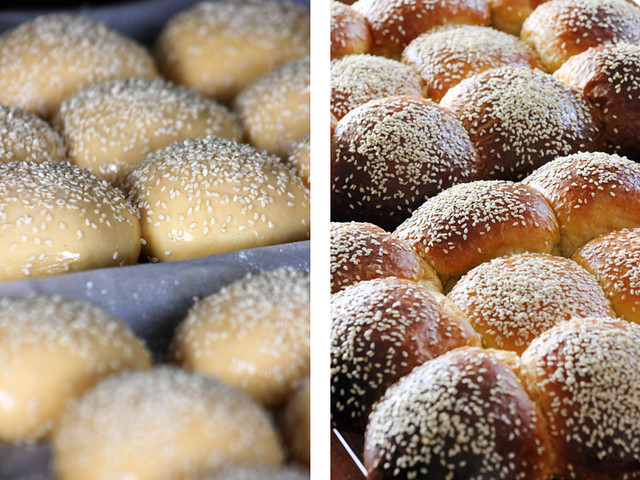
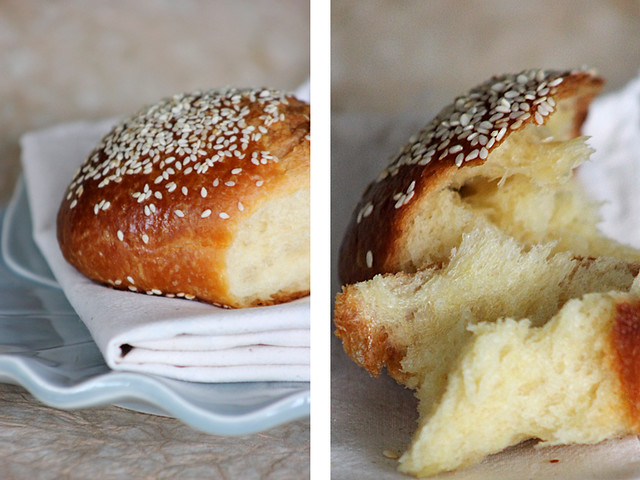
A sniff of the biga let me know it was ready and I set to work on the ciabatta. At first it seems hard to believe that the wet slops will strengthen with stretch and folds to a cohesive mass that can roughly hold its shape.
After a 2.5 hr bulk ferment the ciabattas were shaped with a quick letter fold before being placed seam side down on a floured teatowel to prove for 45 mins … then flip, slide, dimple and peeled into a very hot oven until well browned.
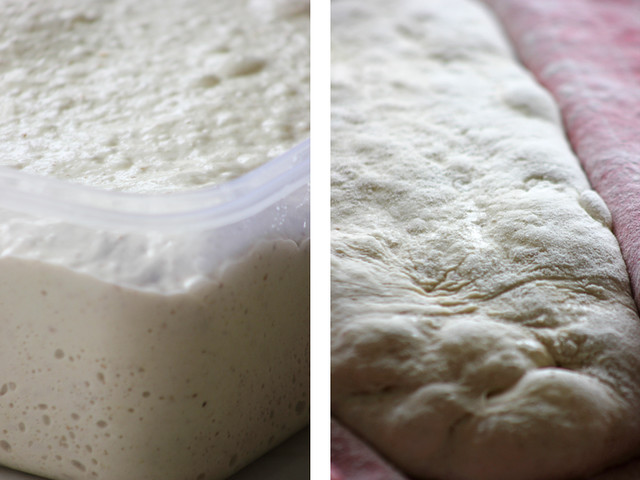

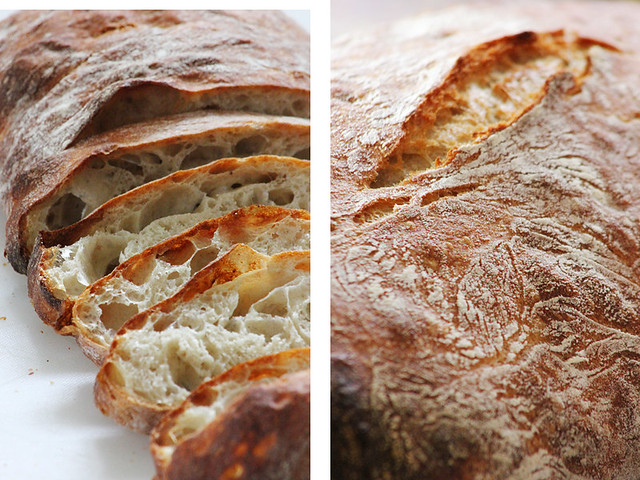
The breads were well received by all, with the hit of the night being the brioche burger buns. Their rich interiors and fine golden crumb provided more than enough sustenance for the hard working chefs. Heard on the rumor mill during the night - “Nat only wants me for my buns” :)
The ciabatta crumb was creamy and delicate encased in a thin caramel crust with the aroma of the biga in every bite. It was a pleasure to watch it being enjoyed by so many.

All the best,
Phil







